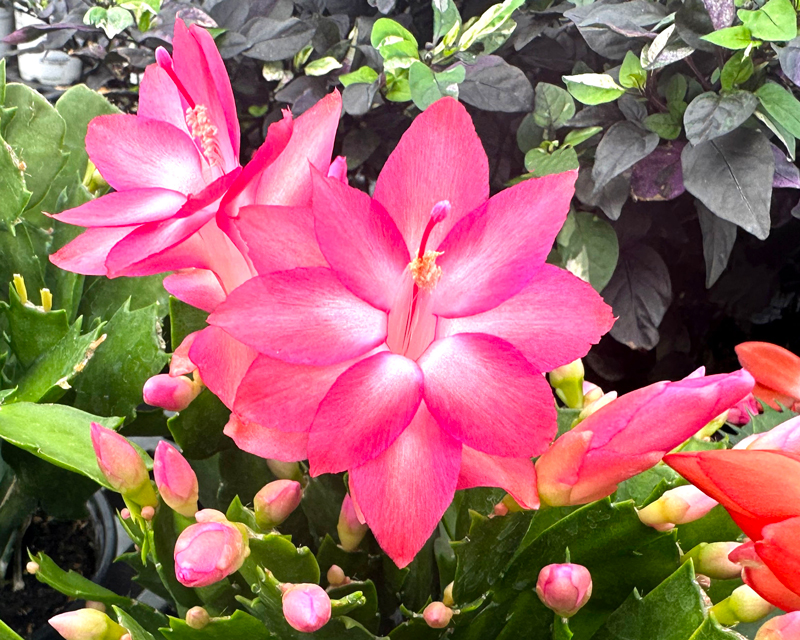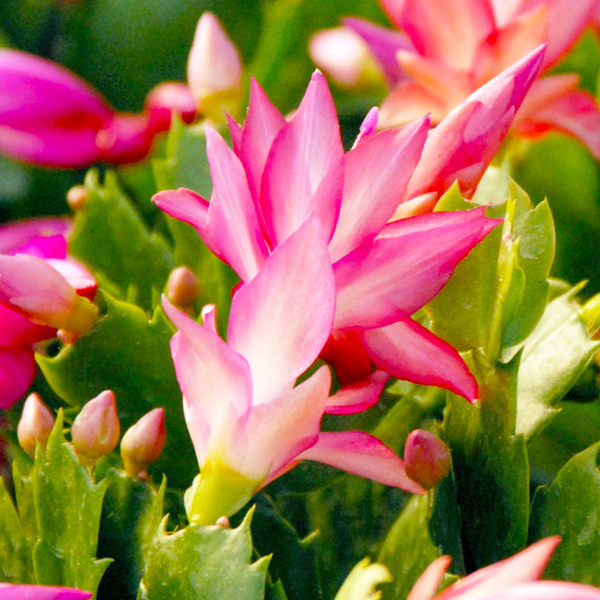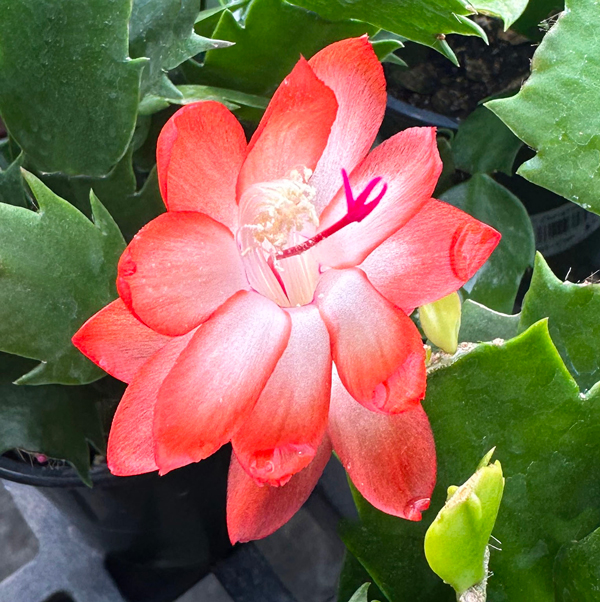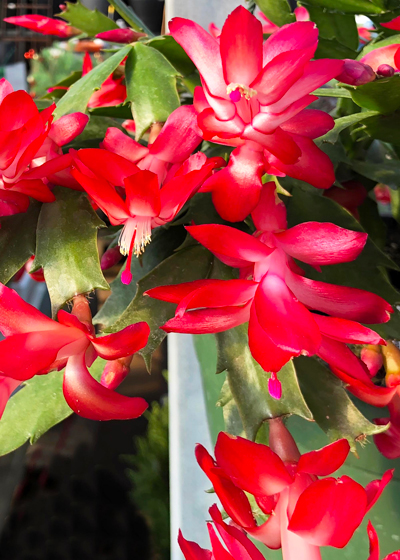Fun Facts About Christmas Cacti
Take a quick scan down this list and see if you were already aware…
• All members of the Cactus family are native to the Western Hemisphere. Any that are found growing wild in the Eastern Hemisphere have either escaped cultivation or they’re cactus wannabes such as the many members of the Euphorbia family of plants (crown of thorns, baseball cactus, etc.)
• Not all cacti are native to dry areas. Our stars of today’s story are native to tropical rainforests along the Atlantic Coast of Brazil, both directions from Rio de Janeiro.

• Not all cacti grow in soil. These plants grow suspended from branches. They have gotten their starts as their seeds sprouted in organic matter that collected in crotches of branches.
• “Epiphytes” that they are (grow suspended by other plants), they gain their nutrients and water directly from what collects around them. They do not take anything away from their support trees. They are epiphytic, not parasitic.
• Early explorers took the plants back to Europe around 1820. After kicking the scientific names around for 200 years, they have finally settled on the genus Schlumbergera.

• Schlumbergera truncata: Flowers are generally held horizontally or lightly above the horizontal line. The stem segments have pointed teeth that look like crabs’ claws.
• Schlumbergera russelliana: Flowers hang downward below the horizontal line. These have rounded stem segments.

• Those things that you see are stem segments, not leaves. You can start new plants by rooting pieces of a stem with 2 or 3 segments together. They root easily if laid on top of moist, fast-draining potting soil (50-50 peat and perlite, for example). Or, if you’re very careful not to overwater them you can insert them gently into the mix, one stem segment deep.

• How do you find nice Christmas cacti? Nurseries and flower shops have very good supplies this time of year. One of the joys of digital photography is that there isn’t any expense to processing film. I stop in at Calloway’s in November and I rarely leave without another 30 photos of Christmas cacti! (And several new plants for my greenhouse!)
• Really unusual selections can be found on eBay. I’ve bought some incredible succulents (mainly aloes and haworthias) there, and I’ve only been disappointed one time. I just checked, and there were 594 Christmas cacti plants being sold on eBay earlier this week.

Care of Christmas cacti…
I prefer terra cotta pots for their weight. I use 50 percent sphagnum peat moss, 25 percent finely ground pine bark mulch, and 25 percent expanded shade or perlite. The plants do best in bright shade since that duplicates what they had in their rainforest homes, and they must be protected from frost and freezes.
Christmas cacti, like mums and poinsettias are “photoperiodic.” They measure the length of the dark period, and when nights are long enough, they start producing flower buds. You’ll have your plant in the house with you, so be sure it’s not in a bright room where you’re going to have lots of light on around it. Daytime: bright light. Nighttime: darkness without interruption.

